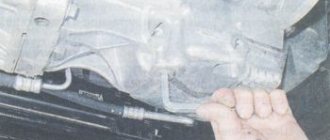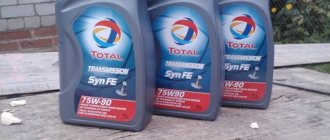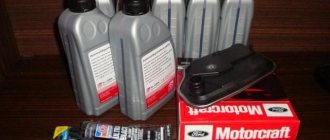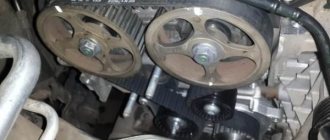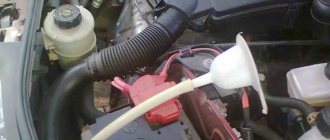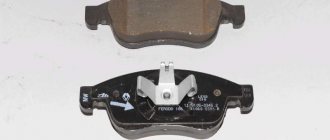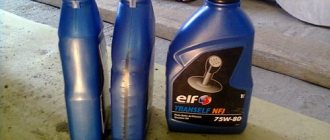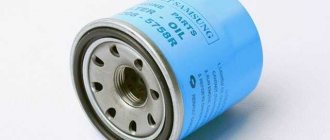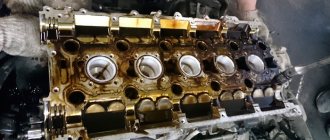Changing oil, coolant and lubrication of components and assemblies is a standard procedure for any car. This also applies to the Renault Duster . It is important to choose the right material that will have a high-quality composition. You can perform this procedure in two ways:
- Contact specialists;
- On one's own.
Such a replacement is a simple but responsible process. Its implementation requires care and precision. Mistakes made will negatively affect the operation of the vehicle and cause it to break down at the most inopportune moment. When choosing a liquid, it is necessary to take into account various points. The main ones include the mileage of the car, wear of spare parts, the service life of the oil after the previous change, etc. In addition, it is important to correctly calculate the required amount.
As practice shows, saving in this matter is not always appropriate. It is better to entrust a complete engine oil change to specialists. In this case, lubrication will not be enough. It is also worth contacting him if obvious breakdowns, leaks and other phenomena unusual for the car are visible. Otherwise, the situation will only get worse. Fixing it will require time, effort and money to purchase new spare parts.
If you decide to change the fluid yourself, the information below will certainly come in handy. We offer the name of the liquid, place of application and volume for each system.
Renault Duster began production in 2011 and has two generations to date. The cars are equipped with petrol engines with a volume of 1.6 and 2.0 liters, as well as a diesel unit with a volume of 1.5 liters. All of them can be either all-wheel drive (4x4) or not (4x2). The Duster with the F4R engine was partially equipped with an automatic transmission model DP0. To keep the car in technically sound condition and to protect “weak points”, it is recommended to carry out maintenance work regularly, in accordance with the regulations. Complex maintenance operations and procedures related to warranty service are recommended to be carried out at a service station. But it is better to do the simplest Renault Duster maintenance list yourself. What is needed for this and how much it will cost, see in detail below.
Maintenance of Renault Duster. What is needed for maintenance
| Renault Duster technical fluid volume table | ||||||
| Engine | Engine oil(l) | coolant(l) | Manual transmission (l) | Automatic (l) | Brake/Clutch (l) | Power steering(l) |
| Gasoline engines | ||||||
| 1.6 16V (K4M) | 4,8 | 5,45 | 2,8 | 3,5/6,0 | 0,7 | 1,1 |
| 2.0 16V (F4R) | 5,4 | 5,45 | 2,8 | 3,5/6,0 | 0,7 | 1,1 |
| Diesel unit | ||||||
| 1.5 dCi (K9K) | 4,5 | 5,45 | 2,8 | 3,5/6,0 | 0,7 | 1,1 |
The Renault Duster maintenance schedule table is as follows:
Volume of oils and fuel fluids Renault Duster
Changing oil, coolant and lubrication of components and assemblies is a standard procedure for any car. This also applies to the Renault Duster . It is important to choose the right material that will have a high-quality composition. You can perform this procedure in two ways:
Such a replacement is a simple but responsible process. Its implementation requires care and precision. Mistakes made will negatively affect the operation of the vehicle and cause it to break down at the most inopportune moment. When choosing a liquid, it is necessary to take into account various points. The main ones include the mileage of the car, wear of spare parts, the service life of the oil after the previous change, etc. In addition, it is important to correctly calculate the required amount.
As practice shows, saving in this matter is not always appropriate. It is better to entrust a complete engine oil change to specialists. In this case, lubrication will not be enough. It is also worth contacting him if obvious breakdowns, leaks and other phenomena unusual for the car are visible. Otherwise, the situation will only get worse. Fixing it will require time, effort and money to purchase new spare parts.
If you decide to change the fluid yourself, the information below will certainly come in handy. We offer the name of the liquid, place of application and volume for each system.
Source
List of works during maintenance 2 (for 30,000 km)
- All work provided for by TO 1 - replacing engine oil, oil, air and cabin filters.
- Replacing spark plugs. For engines (gasoline) 1.6/2.0, the same Renault spark plugs are installed, having article number 7700500155. The price is 160 rubles per piece.
You also need to do a number of checks:
- Throttle body fuel injectors.
- Level and quality of oil in automatic transmission.
- Lubricant level in the transfer case (for vehicles with all-wheel drive).
- Lubricant level in the rear axle gearbox (for vehicles with all-wheel drive).
Spare parts for maintenance
Additionally, it is recommended to clean the air conditioning system.
What consumables and how much fluid to fill in Renault Duster
Renault Duster is an inexpensive, compact and modern crossover. The main thing that attracts many buyers is its affordable price. In addition, the car has good off-road qualities, is comfortable and attractive. It is based on the VO platform. Equipped with several types of power plants - gasoline and diesel. The first are presented in two volumes: 1.6 and 2.0 liters, with a power of 102 and 135 hp. respectively. Second units – 1.5 l, 90 hp. The latter are less in demand, since there is a high probability of failures in traction.
Affordable crossover for Russian roads
Its name speaks volumes about the purpose of this compact SUV. The English word Duster emphasizes that the car is designed for “dusty” roads.
It began to be produced in Romania. For this purpose, the production facilities of the Dacia plant are used. Russian car enthusiasts have become acquainted with this model since 2009.
Currently, the car is assembled at the Russian Avtoframos plant (formerly AZLK). Several modifications are offered to consumers. The crossover is popular among motorists from all CIS countries. It is based on the legendary B0 platform, which allows you to unify the configuration of the car’s parts with other models - from Renault and Nissan. The degree of unification is up to 70%, which has made it possible to significantly reduce the cost of producing an SUV.
Today, both all-wheel drive and front-wheel drive versions of the car are offered. There are options with 4-speed automatic transmissions, as well as 5- and 6-speed manual transmissions. They are equipped with three engine options - 1.6 and 2 liter petrol, in addition - a 1.5 liter diesel. At the end of 2013, the model was restyled.
Filling volumes and brands of oils for Renault Duster
Filling/lubrication point
Name of oil/liquid
What and how much oil to fill in Renault Duster
The fuel tank can hold no more than 60 liters of fuel. The manufacturer recommends filling with AI-92.
The quality of work of a French crossover directly depends on timely maintenance. According to the manufacturer's recommendations, the lubricant should be changed every 15 thousand km or once a year. The frequency depends on which comes first. Recommended fluid for ELF EVOLUTION SRX gasoline units. Can be replaced with Mobil 1. For diesel engines - ELF Competition STI. Viscosity requirements - 5w40. Filling volume - from 4.5 to 5.4 liters.
The official schedule for replacing coolant is 90 thousand km. If three years comes earlier, a lubricant update will also be required. The volume is 5.5 liters. If you have air conditioning, you will need 1 liter less fluid. GLACEOL RX (type D), a solution of antifreeze concentrate in distilled water, does not contain amines, is used.
Despite the fact that the manufacturer does not provide for changing transmission oil and fills it for the entire service life of the car, it is still worth replacing. It is better to do this during the first 100 thousand km, then every 80,000. ELF Tranself TRJ 75W-80 or ELF Tranself NFJ 75W-80 lubricant is suitable for these purposes.
Source
Engine
Regardless of which engine is installed under the hood, the manufacturer always recommends using Elf oils. In principle, there is nothing wrong with this, and, for example, Elf EXCELLIUM LDX 5W40 oil is very decent.
True, the same instructions also allow 15W40 oil. Such oils are hopelessly outdated. For a modern engine, their temperature range is too narrow. In my opinion, Duster engines can be filled with any oil for gasoline engines with API quality level: SL; SM; SN or ACEA A2 or A3 and with SAE viscosity level: 5W40; 5W50; 5W30; 0W30; 0W40. Well, with the seasonal selection everything is as usual. Of the shown line of viscosities, the first two are best used in the summer, and with “0” ahead - in the winter. But, please, no 0W20: all these energy-saving technologies will ruin the Duster engine.
The price of oils from different manufacturers can fluctuate in the range of 1500–3000 rubles for the quantity required for replacement. But the simplest advice is that it’s better to change inexpensive oil more often than to drive until you’re blue in the face with super expensive ones. Moreover, Renault, unlike some automakers from the East, clearly recommends cutting fifteen-thousandth service intervals by half under severe operating conditions. And these, according to the company, include:
- constant trips over short distances;
- preferential use in the city;
- frequent short-term trips with a cold engine in cold climates;
- off-road use and towing a trailer.
Antifreeze should be changed every 90,000 km or every 4 years. The event is infrequent, and therefore you can use the company’s recommendation and fill it with Glaceol RX Type D. Well, if you can’t find such antifreeze in your region, then you can fill it with any high-quality carboxylate. Concentrate and distilled water will cost no more than 2,500 rubles.
What should the viscosity be?
The viscosity index is one of the most important parameters. To understand what this is, it is enough to compare the speed at which oils with different viscosities flow out. With a viscosity of 5w40 it will pour out faster than 20w40. Now we need to understand why this is needed.
Depending on the operating temperature of Renault Duster, the factory prescribes the appropriate oil viscosity. For winter, when the temperature drops below 20 degrees Celsius, it is recommended to pour oils with a viscosity of 5w40. Low temperature reduces fluidity, so more liquid will interact well with this mode and ensure an easy start of a cold Duster. If the viscosity is high, for example, it will freeze, and then it will become more difficult to turn the crankshaft.
In high temperature conditions, it is recommended to use 15w40 and 20w40. Grease will increase its fluid properties as the temperature rises, and will also bring this value to normal.
Therefore, when switching from one operating season to another, it is recommended to change the lubricating fluid to avoid overheating or freezing. All these parameters are indicated on the packaging.
Manual Transmission
The manufacturer does not provide for changing the oil in the box at all, but this is only if you are going to drive the car for no longer than the warranty period. I would recommend changing the oil every 60,000 km for normal driving, or even more frequently for high percentage driving in difficult conditions.
The manufacturer recommends Tranself TRZ 75W 80 or Tranself TRJ 75W 80 with quality level API GL4+ (GL4/GL5). You should buy 3 liters, but in reality you need to fill it along the lower edge of the filler hole. The oil will cost 1,500 rubles. As an alternative, you can use gear oils from other reputable manufacturers with the same viscosity and quality level. Although I don’t see much point in deviating from the factory recommendations.
What motor oil to use
In the operating manual for Renault Duster, the manufacturer prescribed recommendations for the use of engine oil. Plus, in the passport you can find all the characteristics that a high-quality lubricant can have. This is, first of all, the quality class, viscosity and even volume of oil, including the brands that produce the oil.
When engineers of well-known automotive companies produce a specific type of engine, they accordingly order a special type of lubricant from their partner companies that produce oil. So, for example, the French auto company Renault works with the Elf company, which is why it is recommended to pour oil produced by them into the Renault Duster, and of course, monitor the volume of oil that is poured.
Many people wonder: is it necessary to buy motor oil recommended by the car manufacturer? Absolutely not necessary! Of course, if there is such a possibility, then it is better to use the lubricant that is prescribed in the instructions for the car. Still, for all European cars without exception, there is one, although officially established, rule that every driver must certainly follow, and only then look at the brand label. This rule is a certain tolerance. You don’t have to tie your car to a specific brand that produces lubricant, but in no case should you violate the specified tolerance, and you shouldn’t forget about the volume of oil.
Automatic transmission
Just as in the case of mechanics, the manufacturer did not specify fluid change intervals. But I know from experience that the fluid needs to be changed at least once every 60,000 km.
When repairing the box, the manufacturer recommends using ELF RENAULTMATIC D3 SYN liquid, manufactured according to the DEXRON III standard. With a partial replacement, about 4 liters will be included, which will cost approximately 2,200 rubles. This fluid is of an average price level, and if you want to pamper your machine, you can use Mobil fluid with the index LT 71141. Just keep in mind that you need to switch to such a fluid with a complete replacement. This will require 7 liters, which will cost 4,200 rubles.
Angular gearbox (transfer case) and rear gearbox
The manufacturer does not provide for changing the oil in the bevel gearbox, but, according to experience, the oil turns black, becoming saturated with wear products, after 30,000 km, and it is better to change it. For this and the next unit, it is enough to purchase 1 liter of TRANSELF UNIVERSAL FE 80W90 oil, which will cost no more than 600 rubles.
In the rear gearbox, the manufacturer recommends changing the oil once every 60,000 km under normal operating conditions and twice as often under severe operating conditions.
Both units are tucked under the lower cut of the filler plug. I believe that oils from other manufacturers with the same viscosity level can be used. The volume is small, so you can fork out for the most expensive oil.
Brake fluid
The fluid is replaced every four years or after a mileage of 90,000 km. You can fill in any DOT-4 standard liquid. For a complete replacement it is better to take 1 liter. The price of such a bottle ranges from 300–600 rubles. Our examination has shown that it is simply impossible to buy bad brake fluids in a decent metropolitan store.
Renault Duster can show high reliability only with timely replacement of operating fluids. Don't be lazy to do it on time. And I also wish not to run into a fake.
- What tricks do automakers go to in order to simplify and thereby reduce the cost of car design, and how this affects the reliability of the car, read here.
- You can check the quality of fuel using a rapid test.
Source
Procedure for replacing lubricant
Before replacing, you should warm up the engine well so that the oil composition completely drains out of the engine.
Then you need to place the car on an inspection hole or on an overpass. To work you need:
When performing work, a certain sequence of actions must be followed:
- Open the hood and unscrew the oil filler neck.
- We go down and unscrew the engine protection. Mounting options may vary depending on the Dastor modification.
- An empty container is placed under the drain plug.
- Use the key “8” to unscrew the drain plug. Here you need to be careful not to drop the plug into the used lubricant. In addition, the leaking liquid will be very hot - you need to remember this.
- You need to wait a while until the oil stops flowing completely.
- The oil filter is being replaced. To do this, use a removable device to unscrew the old filter element. You need to make sure that the container for used lubricant is underneath it, as this will cause some liquid to spill.
- In the new filter, the sealing gasket and threads are lubricated with oil. The filter can be half filled with oil mixture. Then it is installed on the seat. It is twisted by hand, but excessive force should not be applied.
- A new gasket is installed in the drain plug, after which it is screwed into place.
- A new lubricant is poured through the filler neck. Periodically it is necessary to check the lubricant level with a dipstick. It should be just below the max mark. After this, the filler neck is screwed on.
- The engine starts and the oil pressure sensor is monitored. It should go out, but not immediately, but with a slight delay. The engine idles for about 5 minutes and then turns off.
- Check the lubricant level with a dipstick. Its reading should be slightly higher between min and max.
- Check the tightness of the installation of the drain plug and filter element. If everything is in order, the protection is installed in its place.
The work is finished, you can drive until the next replacement.
